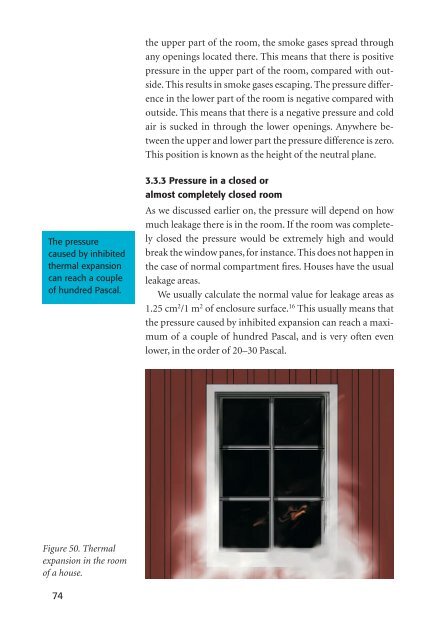Create successful ePaper yourself
Turn your PDF publications into a flip-book with our unique Google optimized e-Paper software.
The pressure<br />
caused by inhibited<br />
thermal expansion<br />
can reach a couple<br />
of hundred Pascal.<br />
Figure 50. Thermal<br />
expansion in the room<br />
of a house.<br />
74<br />
the upper part of the room, the smoke gases spread through<br />
any openings located there. This means that there is positive<br />
pressure in the upper part of the room, compared with outside.<br />
This results in smoke gases escaping. The pressure difference<br />
in the lower part of the room is negative compared with<br />
outside. This means that there is a negative pressure and cold<br />
air is sucked in through the lower openings. Anywhere between<br />
the upper and lower part the pressure difference is zero.<br />
This position is known as the height of the neutral plane.<br />
3.3.3 Pressure in a closed or<br />
almost completely closed room<br />
As we discussed earlier on, the pressure will depend on how<br />
much leakage there is in the room. If the room was completely<br />
closed the pressure would be extremely high and would<br />
break the window panes, for instance. This does not happen in<br />
the case of normal compartment fi res. Houses have the usual<br />
leakage areas.<br />
We usually calculate the normal value for leakage areas as<br />
1.25 cm2 /1 m2 of enclosure surface. 16 This usually means that<br />
the pressure caused by inhibited expansion can reach a maximum<br />
of a couple of hundred Pascal, and is very often even<br />
lower, in the order of 20–30 Pascal.

















